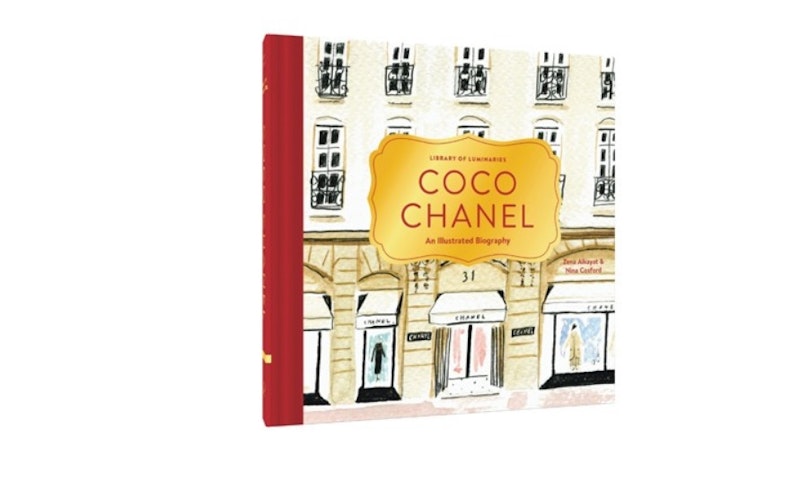
Culture At Large
Special Revelation, General Revelation, and Chronicle’s Library of Luminaries
Liz Wann •
I’ve been an admirer of Coco Chanel’s ambition, designs, and other aspects of her life story, so when I found out Chronicle Books had a series of illustrated biographies called Library of Luminaries and that Coco Chanel was one of them, I was all in. Chanel’s biography was released this past August along with one on Frida Kahlo, joining books on Jane Austen and Virginia Woolf. Nina Cosford illustrates these women’s stories with delicately sharp watercolor designs, while Zena Alkayat pieces together quotes and personal letters from each author or artist, along with her own words, in handwritten text.
This concept of placing equal emphasis on text and visuals is a rarity in adult literature, perhaps even more so for Christians. We tend to place a higher level of importance on text because it represents objectivity, whereas the visual arts are considered to be more subjective. Our doctrine, however, includes an interplay between visuals and text: the objective, inerrant text being the Bible (special revelation) and the subjective visual arts being God’s creation (general revelation). The visual reveals beauty; the text deals in details. This is also true for the Library of Luminaries series. It’s a balance of show and tell.
Sometimes, though, we get off balance. If the visual arts are still somewhat stigmatized by Christians, perhaps it’s because we associate visual stimulation with lust or inordinate desires. Or maybe we feel an awkwardness over interacting with the material things of this world. Paintings, design, film, and television that do not feature clear Christian subject matter are much harder to discern and sift through. Yet just because it’s hard work doesn’t mean the visual arts should be discounted. Creations on canvas, on rolls of film, and on memory cards convey emotion, meaning, and truth in ways that text cannot.
Creations on canvas convey emotion, meaning, and truth in ways that text cannot.
Can the visual arts be beneficial to a Christian? Yes. God made man to imitate him in reproducing beauty. Because we are his image bearers we can also create lesser versions of his beautiful creation. We can find in some of the visual arts what Paul describes in Philippians 4:8: “Whatever is true, whatever is honorable, whatever is just, whatever is pure, whatever is lovely, whatever is commendable, if there is any excellence, if there is anything worthy of praise, think about these things.”
When it comes to the visual arts, we also don’t have to always analyze it. Sometimes it’s appropropriate to simply absorb and take in what we see. I love Nina Cosford’s illustrations in the Library of Luminaries series, but I don’t completely know why. It’s subjective and that’s OK. God gives such gifts not only so we can plumb the depths of theological meaning, but also enjoy the thing itself: the beauty and playfulness of light in film and photography or the interplay of colors and textures on a canvas. We can enjoy art for art’s sake.
In The Gift of Art, Gene Edward Veith says, “Because a painter is not a Christian, that does not mean that his paintings cannot be enjoyed or even imitated by Christians. To be sure any thematic content must be scrutinized very critically through the lens of scripture, but art as art is essentially neutral.” Therefore, we can delight in the balance of text and image in our world, in our doctrine, and even in the pages of an illustrated biography about Coco Chanel.
Topics: Culture At Large, Arts & Leisure, Books, Art